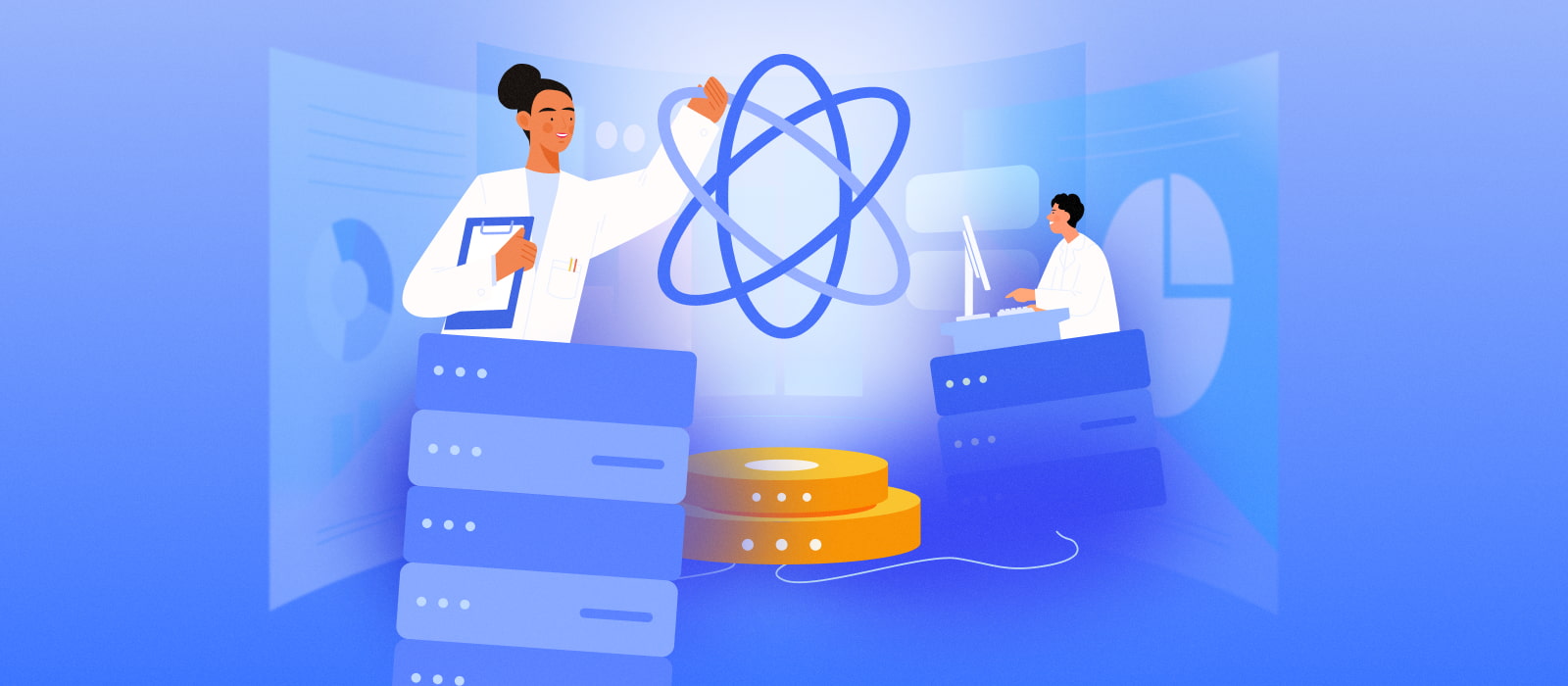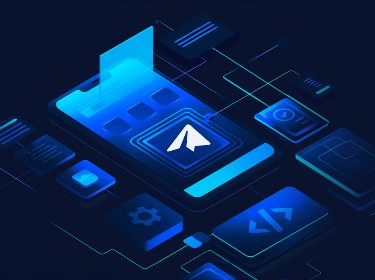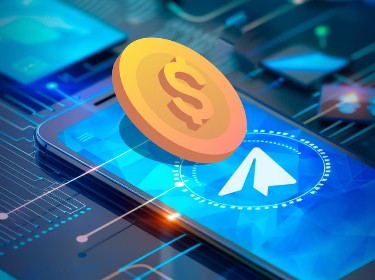Data has been the key to growth and prosperity for a wide range of businesses in recent years. As a result, data science has become a popular concept that companies worldwide are striving to adopt in their workflows. But which specific benefits does it offer?
Digital data is commonly referred to as the oil of the twenty-first century. No wonder therefore that data science has become part and parcel of the operations of numerous organizations worldwide.
The amount of data produced every single day is staggering. It is expected that global data creation will grow to more than 180 zettabytes by 2025. This suggests that the need for data scientists will be increasing too: the U.S. Bureau of Labor Statistics predicts that the number of data scientist jobs will grow by about 28% through 2026, which is roughly 11.5 million new jobs in the field.
But what is data science exactly, what tools does it leverage, what value can businesses gain from it, and, finally, how is data science applied across industries? Let’s explore these questions together.
What is data science really?
Basically, data science is the process of creating and arranging datasets with the purpose of extracting and analyzing valuable insights for strategic planning, forecasting, decision making, and so on. It empowers businesses to design predictive models and imitate a variety of possibilities derived from their recorded performance metrics.
Data science operates with huge volumes of data that come from different sources. To spot connections and patterns, it relies on multiple disciplines and fields such as data engineering and mining, predictive analytics, artificial intelligence, visualization, statistics, mathematics, and software programming.
In terms of which tools are most used, data science professionals normally opt for the following: SAS, SQL, Python, R, Java, Tableau, TensorFlow, BigML, Apache Spark, Excel, and Weka.
Take the time to learn about the core differences between data science, data analytics, and big data
Check out the video below to find out more details on data science and its relation to such terms as data analytics, business intelligence, and big data. Get a comprehensive big data vs BI vs DA vs data science comparison.
What does the data science process look like?
Normally, the data science process consists of five steps: data collection, data cleaning, data analysis, model creation and deployment, and results communication.
Let’s take a look at each stage in greater detail.
Data collection
It is essential to understand and be able to explain what exactly you are planning to achieve with data science. You should also have a list of questions and aspects of your business you are eager to enhance with the help of data.
Once you are done with this, your team of data scientists can get down to collecting the necessary sets of data from all identified internal and external sources, including social media, web servers, or data retrieved from online sources via APIs.
Data cleaning
The collected data may be unfiltered and unstructured, with high levels of inconsistencies and incorrect formats. All these issues will need to be cleaned to safeguard the accuracy of predictions.
The data cleaning process includes the removal of duplicates, inconsistent data values, invalid entries, null values, and so on.
Data analysis
Once all the data has been cleaned and organized, it is time to perform an exploratory data analysis. This will help you get valuable and actionable information that will be used throughout the upcoming data science process.
Model creation and deployment
When the data has been analyzed, you can proceed with the actual data modeling, wherein data scientists allocate datasets for training and testing. During this step, data scientists adopt techniques such as association, classification, and clustering to get the most accurate insights and predictions.
Afterwards, the model is subject to exhaustive testing and is then ready to be deployed in the production environment. This step implies the creation of a delivery mechanism to present the model to users or to another system.
Results reporting
Finally, all the findings can be reported to stakeholders. It is mandatory to present the findings in an understandable fashion, accompanying them with clear and accurate data visualizations and graphics.
Check out how PixelPlex delivered this data-driven business intelligence service for the NFT ecosystem
Why is data science so important for businesses? Overview of the key benefits
![]()
Businesses that decide to embrace data science tend to be on the winning side and have a competitive advantage over their opponents. For example, they can extract valuable customer insights, create better products, be able to predict and mitigate risks, streamline their processes, and enhance decision making.
Data science helps gain customer insights and create better products
By leveraging data science, you can analyze heaps of customer reviews and other essential information. This will help you either enhance an existing product or service, or deliver a brand new one that will meet clients’ needs and expectations.
Chiefly, data science will enable you to see how the audience perceives your product, and will even help spot new niches and market trends to target. Using the processed data, you will be able to extract many more personalization techniques to tailor your goods and services to the likes and preferences of your customers.
Data science allows businesses to predict and mitigate risks
Data science can also assist businesses in risk mitigation. You may use data to detect and reduce customer churn, predict and handle financial risks, and even spot fraudulent activities and enhance cybersecurity measures.
With risk analytics at hand, businesses can incorporate risk concerns into their strategic decision-making processes. Business intelligence consulting can enhance insights and contribute to greater business agility.
Data science streamlines business processes and improves decision making
Data science offers businesses a myriad of opportunities to optimize their workflows and eliminate bottlenecks. Once the data has been analyzed, you can look into why some areas have been less successful and work out how to optimize them further. Equally, you can evaluate the performance of your product and uncover why it lags behind its competitors.
What’s more, a lot of businesses tend to make wrong assumptions and decisions which can be attributed to the lack of information gathered from surveys and R&D consulting efforts. Data science has the capacity to beat this challenge too. By processing and analyzing huge amounts of data, companies can confidently make more informed, data-driven decisions that will benefit consumers and stakeholders.
What are some real life examples of data science applications in businesses across domains?
![]()
Data science has established itself as a go-to tool within a number of domains. It can be applied in a range of processes and operations, thus helping businesses uncover new opportunities and become more agile.
Below we will consider some of the most widespread data science applications in different domains, and see how world-renowned companies have implemented the technology and benefited from it.
Data science in healthcare
Data science, alongside machine learning, has been widely used in healthcare and has helped the industry upgrade to a whole new level.
By leveraging artificial intelligence and data science advancements, it is now possible to design predictive models that can help anticipate patients’ reactions to particular drugs and treatments as well as forecast risks of disease development.
As well as this, pharmaceutical companies have started utilizing data science to extract insights from patients’ mutation profiles and metadata. This data allows researchers and companies to design drugs that have the potential to deal with core mutations in the genetic sequence.
AstraZeneca, for instance, is known to extensively leverage data science and AI across its R&D, allowing its scientists to deliver life-changing medicines. Recently, the organization partnered up with Thorne HealthTech and announced a two-year cooperation on a disease discovery system to facilitate novel drug development with the help of data science and AI.
Learn more about this AI-enabled retina analysis and disease diagnosis tool
Data science in finance and banking
By leveraging data science services in risk analytics and management, financial organizations can increase their transparency and trustworthiness and enhance the security of their processes.
What’s more, institutions can employ data science as well as machine learning algorithms to train on data such as customers’ financial transactions and their spending patterns, and therefore verify their creditworthiness.
Analyzing this type of data also helps banks prevent fraud and reduce losses for both the organizations themselves and their consumers. For instance, a large number of banks use special ML-powered algorithms to prevent further spending in case they spot a credit card demonstrating unusual and suspicious activity.
Notably, data science can be helpful in automating customer interactions. For example, Australian ANZ Online Business Lending cooperated with the data-driven DemystData platform to boost the processing and verification of clients. As a result, ANZ can provide a final decision on conditional lending in around twenty minutes and full approval within just two days.
Data science in retail
Retailers the world over have long been using data science in their processes and seem to be happy with the result. It helps them analyze and extract valuable information about customers from their past purchases, preferences, and browsing habits. As a result, retailers can come up with more personalized ad campaigns and recommendations and boost their ROI.
Coca-Cola and Pepsico, for example, incorporated AI-enabled analytics tools long ago to forecast their customers’ preferences. Starbucks has been extensively using data science in its marketing and promotional campaigns. The company also uses the discipline to analyze data related to location, customer behavior, and demographics to forecast the success of their new stores in unprofitable locations.
Walmart, one of the largest retailers in the world, has benefited from data science as well. It has invested a lot of money and spent much time analyzing data to extract valuable insights and implement them in its processes to enhance the customer experience.
Data science in agriculture
Farmers can make use of data-driven insights tailored to their land and ownership patterns to gain a better understanding of what, where, and when to plant. With data science, they can analyze large quantities of information related to previous crops, weather conditions, and so on, and plan their further work in accordance with the information gained.
Furthermore, with data science, it is now possible to preserve harvests. The US-based Taranis, for example, helps farmers protect their crops by using AI, computer vision, and data science. As a result, farmers can make smarter decisions in precision agriculture and take better control of nutrition deficiency, diseases, pests, and weeds.
Importantly, by applying data science and machine learning, farmers can also reduce the use of resources such as water, energy, land, and nutrients.
Data science in the energy sector
In the energy domain, data science enables preventive equipment maintenance. The combination of sensors, trackers, and data science tools help collect and analyze information and communicate key events. Based on the derived output, a system will issue alerts about energy outages or mechanism malfunctions that require immediate action.
In addition to this, energy and utility businesses can apply data science advancements to spot workflows that are in dire need of optimization. These new disciplines help process large amounts of data and model different efficiency rates under various circumstances.
Another prominent aspect worth highlighting is that data science can lead to efficient energy usage. For example, EnergyCAP, a company providing energy and sustainability ERP software services, recently acquired Wattics, an energy management analytics and monitoring software provider. This move is set to equip energy and sustainability leaders with reliable, actionable data to handle consumption, reduce their carbon footprint, and drive savings.
What are the future prospects for data science?
The range of data science capabilities is enormous and diverse. This sophisticated tech has established itself as a serious game-changer which can elevate literally any business to a whole new level.
With data science, organizations stand to enjoy a myriad of opportunities and benefits, gain a competitive edge over their competitors, optimize decision making, streamline workflows, and receive exhaustive insights about their customers to help ensure they stay on the same wavelength as them.
Once you have decided to explore the transformative power of data science, make sure you partner up with a professional data science company. By utilizing smart AI algorithms and top-notch analytical data platforms, our PixelPlex team will help you unleash novel trends and make the grade in your business domain.
Contact us and let’s start exploring new horizons together!




